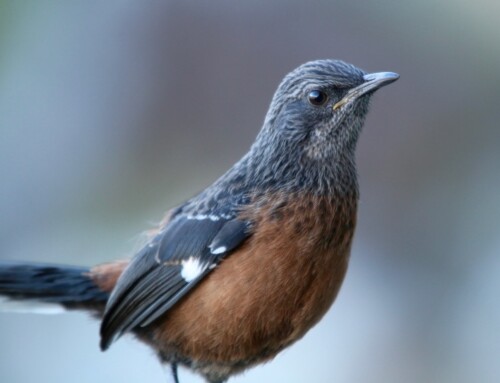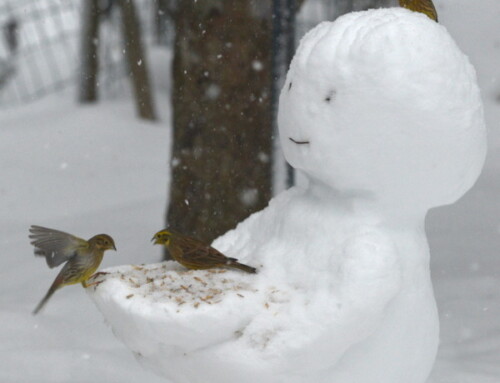LINKED PAPER
Common starling (Sturnus vulgaris) laying dates, 1970-2019, have not changed in New Zealand, in contrast to those in Denmark. Flux, J.E.C. & Flux, M.M. 2021 Notornis. VIEW
 Our study of starlings nesting at Belmont (17 km NE of Wellington, New Zealand) began in 1970. It was designed to measure the effect of artificial selection for high clutch-size in a wild population over 10 years (Flux & Flux 1982), but was continued to track climate change. By 1987 they were laying 17 days later, a very significant (P = 0.0003) change. So we published it and asked for any explanations (Flux 1987). There were no replies, but one scientist warned that no one would quote this because the expected trend was towards earlier laying, and our results went the opposite way.
Our study of starlings nesting at Belmont (17 km NE of Wellington, New Zealand) began in 1970. It was designed to measure the effect of artificial selection for high clutch-size in a wild population over 10 years (Flux & Flux 1982), but was continued to track climate change. By 1987 they were laying 17 days later, a very significant (P = 0.0003) change. So we published it and asked for any explanations (Flux 1987). There were no replies, but one scientist warned that no one would quote this because the expected trend was towards earlier laying, and our results went the opposite way.
After 50 years of data, everything changes: “a salutary reminder of the frailty of statistics and short-term studies in ecology” we suggest in this new paper. The median laying date of first clutches has remained steady around 20th October since 1975, a surprising result when earlier nesting following climate change seems widespread. Indeed an excellent long-term (1971-2015) study of a Danish colony found starlings were now laying 9 days earlier (Thellesen 2017). Fig. 1 shows these trend lines against the Belmont data.
 Figure 1 Median first-egg dates of Starlings at Belmont, NZ: (A) the highly significant but misleading regression for the first 17 years, dark blue line; (B) the stability around 20 October from 1975-2019, pale blue dashed line; (C) the Danish study, 1971-2015, showing laying in April is now nine days earlier, black line.
Figure 1 Median first-egg dates of Starlings at Belmont, NZ: (A) the highly significant but misleading regression for the first 17 years, dark blue line; (B) the stability around 20 October from 1975-2019, pale blue dashed line; (C) the Danish study, 1971-2015, showing laying in April is now nine days earlier, black line.
The increase of average temperature in Oceania and New Zealand (0.7ºC) has been less than in Denmark (1.7ºC), and over the 1970-2015 period the local Wellington increase was only 0.4ºC and not statistically significant (P = 0.24). So our colony actually had nothing to adapt to.
We were still puzzled by the trend to later laying in the first few years, 1970-75. But looking at five earlier studies, between 1923 and 2015, where a large number (30+) of nestboxes had been put fairly close together, this seems to be the normal, although previously unrecorded, pattern. Perhaps the initial, hitherto unexploited, food supply becomes depleted and takes about five years to stabilise.
It has been known for a long time, of course, that starlings breed earlier when extra food is provided (Kallander & Karlsson 1993). And 92% collect food for their young from within 500 m of the boxes (Heldbjerg et al. 2017). Hence a decline in the abundance, and variety, of food species available in such small areas could be expected. A careful Scottish study (Anderson 1961), where boxes only replaced existing natural nest sites, does not show this trend; and nor do a few boxes put up in your garden.
Image credit
Top right: Common Starling Sturnus vulgaris © J Flux
References
Anderson, A. 1961. The breeding of the starling in Aberdeenshire. The Scottish Naturalist 70: 60-70.
Flux, J.E.C. 1987. Drift in laying dates of starlings Sturnus vulgaris. Ornis Scandinavica 18: 146-148.
Flux, J.E.C. & Flux, M.M. 1982. Artificial selection and gene flow in wild starlings Sturnus vulgaris. Naturwissenschaften 69: 96-97.
Heldbjerg, H., Fox, A.D., Thellesen, P.V., Dalby, L. & Sunde, P. 2017. Common starlings (Sturnus vulgaris) increasingly select for grazed areas with increasing distance-to-nest. PloS ONE 12: e0182504. VIEW
Kallander, H. & Karlsson, J. 1993. Supplemental food and laying date in the European starling. The Condor 95: 1031-1034.
Thellesen, P.V. 2017. Kuldstorrelse og yngletidspunkt hos Staer i Sydvestjllland 1971-2015 (Common starling Sturnus vulgaris clutch size, brood size and timing of breeding during 1971-2015 in Southwest Jutland, Denmark). Dansk Ornitologisk Forenings Tidsskrift 111: 87-95.




